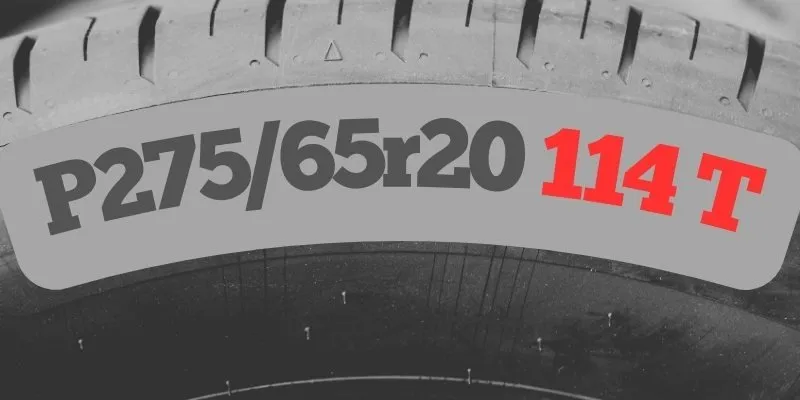What Does 114T Mean on Tires?

The “114” is the tire’s load index, meaning it can support 2,601 pounds at maximum air pressure. The “T” is the tire’s speed rating, indicating it’s safe for speeds up to 118 mph. Together, 114T tells you the tire’s load capacity and speed capability.
What Does the Number 114 Represent?
The “114” in the code refers to the tire’s load index. This number is crucial because it tells you how much weight the tire can safely support when fully inflated. In the case of a tire with a load index of 114, it can support a maximum load of 2,601 pounds (1,180 kilograms).
To give you a better idea, tires with a lower load index are designed for smaller vehicles, such as compact cars, while those with a higher load index are meant for larger vehicles, like trucks or SUVs.
The load index is particularly important if you’re carrying heavy loads or towing, as using tires with an inadequate load index could lead to tire failure and unsafe driving conditions.
What Does the Letter T Indicate?
The “T” in the code stands for the speed rating of the tire. This letter indicates the maximum speed at which the tire can safely operate when carrying the maximum load.
For a tire with a speed rating of “T,” the maximum safe speed is 118 miles per hour (190 kilometers per hour). Speed ratings are important because they help ensure that your tires are matched to the performance capabilities of your vehicle.
However, it’s important to note that just because a tire has a certain speed rating doesn’t mean you should drive at that speed. It simply means the tire can handle that speed under optimal conditions.
Understanding Together
The load index and speed rating work together to give you a full picture of the tire’s performance capabilities. When choosing new tires, it’s important to ensure that the load index and speed rating match your vehicle’s requirements as outlined in the owner’s manual or on the placard inside the driver’s door.
For example, if your vehicle requires a tire with a load index of 114 and a speed rating of T, choosing a tire with lower ratings could result in underperformance, safety issues, or even legal ramifications if you’re driving in a country that regulates tire standards.
Why it’s Important
Understanding what these codes mean can help you make better decisions when purchasing new tires. It ensures that you are getting the right tire for your vehicle, one that can handle the load you carry and perform at the speeds you drive.
Using tires that don’t meet the required load index or speed rating can have serious consequences. Overloading a tire, for example, can cause it to overheat and potentially blow out, while using a tire with an inadequate speed rating can lead to loss of control, especially at high speeds.
Practical Tips
Knowing what 114T means is just one part of tire maintenance. To keep your tires in top shape, here are some simple tips:
- Check Tire Pressure Regularly: Properly inflated tires last longer, perform better, and are safer. Make it a habit to check your tire pressure at least once a month.
- Rotate Your Tires: To ensure even wear and extend the life of your tires, rotate them every 6,000 to 8,000 miles (10,000 to 13,000 kilometers).
- Inspect for Damage: Regularly inspect your tires for any signs of damage, such as cuts, punctures, or uneven wear. Catching issues early can prevent bigger problems down the road.
- Replace When Necessary: Even with proper maintenance, tires don’t last forever. Keep an eye on the tread depth and replace your tires when they become too worn. Most experts recommend replacing tires when the tread depth reaches 2/32 of an inch (1.6 millimeters).
Final Thoughts
The “114T” code on your tires is more than just a random set of numbers and letters—it’s a key to understanding your tire’s load capacity and speed rating.
By knowing what these codes mean, you can ensure your tires are well-suited to your vehicle, leading to a safer and more efficient driving experience.
Remember, when it comes to tires, knowledge is power, and taking the time to understand these details can make a big difference in your vehicle’s performance and safety.

Meet Caitlin McCormack, a Tire Size Expert and Blogger Passionate About Everything Related to Tires. With Years of Experience in the Tire Industry, Caitlin Has Become an Expert in Tire Sizes and Their Impact on Vehicle Performance.
